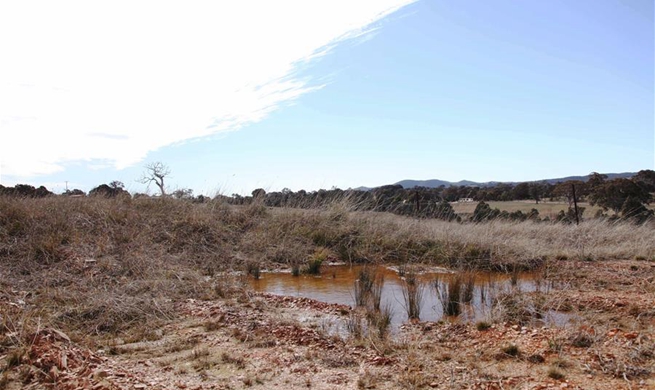LONDON, Aug. 11 (Xinhua) -- The UK GDP growth rate doubled in the second quarter, providing firm support for the Bank of England's (BoE) rate-rise earlier this month.
Quarter-on-quarter growth was 0.4 percent for the second quarter, double the 0.2 percent growth in the first quarter of the year.
First quarter figures had slumped to 0.2 percent after a run of quarters at 0.4 percent growth, affected by bad weather.
New figures from the official statistics body the Office of National Statistics (ONS) showed that there has been some unwinding of the impact of bad weather in affected industries. The pick-up in Q2 was also boosted by consumers taking advantage of the warm weather and the football World Cup celebrations.
Despite a sharp pick-up in retail sales volumes in Q2, quarterly consumer spending growth rose by just 0.3 percent, suggesting that spending off the high street remained subdued.
The services industries and construction increased by 0.5 percent and 0.9 percent respectively, while production decreased by 0.8 percent.
Business investment increased by 0.5 percent over the quarter.
MONETARY POLICY DECISIONS SUPPORTED
Economists had speculated at the time of the first quarter figures that the stumble in growth was a warning of a general downturn in the economy, and the lower figures would be maintained in later quarters.
The conclusion reached by most economists was that the downturn was a downward blip in data, a view shared by the central bank the BoE.
At the beginning of this month the BoE raised the bank rate for only the second time in 11 years, taking it to 0.75 percent, and part of its reasoning was that the poor first quarter figures were an exception largely caused by poor weather.
Friday's figures have backed the bank's assumption.
"The BoE will be reassured by the GDP growth figure. Growth of 0.4 percent is what they were expecting, they would have worried had it turned out to be weaker than that," Dr. Garry Young, director of macroeconomic forecasting at the National Institute of Economic and Social Research (NIESR), said on Friday afternoon.
The NIESR, an independent London-based economic think-tank, released its own GDP forecast figures on Friday afternoon, which detailed growth rising slightly from the official Q2 figure of 0.4 percent to 0.5 percent.
Growth is close to the potential, according to the NIESR, and there is some evidence that services sector output has stabilized while the relatively small construction sector continues to gather momentum.
The NIESR survey noted that the manufacturing and construction sectors are recovering after a particularly weak start to the year. The dominant services sector, accounting for 80 percent of the economy, is set to maintain a similar rate of growth from the second into the third quarter.
"Growth in the second quarter will continue in the third quarter. Weakness in March and April was to do with the weather but figures since then have been fairly promising and I think we can be confident that soft patch is past," said Young.
"Q1 weakness and in the monthly data in April is now past and May and June figures are much more reassuring. I would expect something close to 0.5 percent for the third quarter."
RATE RISES EXPECTED OVER COMING YEAR
The BoE governor Mark Carney said at the time of the rate rise at the beginning of this month that the Bank expected there to be three rate rises over the coming three years.
The Q2 GDP figures do nothing to undermine this direction of policy.
But the question mark hanging over future policy is Brexit, the direction of which is not yet certain.
Carney made clear that it was possible the bank could cut interest rates in the event of a Brexit which posed a threat to the economy.
Young said: "We are on track for more rate rises next year.
"The difficulty is that early next year is around the time of Britain leaving the European Union (EU) which would make it difficult for the Bank to increase in rates in February if there is not an agreed deal by then," Young said.
The expert continued "I would have thought that it might mean that there would be a good chance of a rate rise in May if everything goes smoothly with Brexit."
"If it goes smoothly I expect another rate rise in February, otherwise I think it would be afterwards."
As for the rise, Young said they expect rate rises of 25 basis points for the next year or so, "and the data released today is consistent with that."
TRADE DEFICIT WORRIES
Other data also released by the ONS on Friday showed that the trade deficit widened by 4.7 billion pounds (about 6 billion U.S. dollars) in Q2, with net trade dragging on GDP growth as a result.
This reflects a sharp fall in volumes of exports, down 3.6 percent quarter-on-quarter. Car exports to non-EU countries, especially the U.S., have fallen sharply.
Net trade exerted a large 0.8 percentage points drag on growth, as export volumes dropped by 3.6 percent on the quarter, primarily driven by a fall in car and plane exports to non-EU countries, while import volumes fell by a smaller 0.8 percent.
Excluding the volatile valuables component (mostly non-monetary gold), net trade still subtracted 0.5 percentage from GDP.
"The widening of the UK's trade deficit in the quarter is disappointing, and reflects both a decline in goods exports and a rise in imported goods," said Suren Thiru, head of economics at the British Chambers of Commerce (BCC), an industry representative body.
"The deterioration in the UK's net trade position is further confirmation that we are still some way from achieving a rebalancing of the economy." (1 British pound = 1.28 U.S. dollars)



















